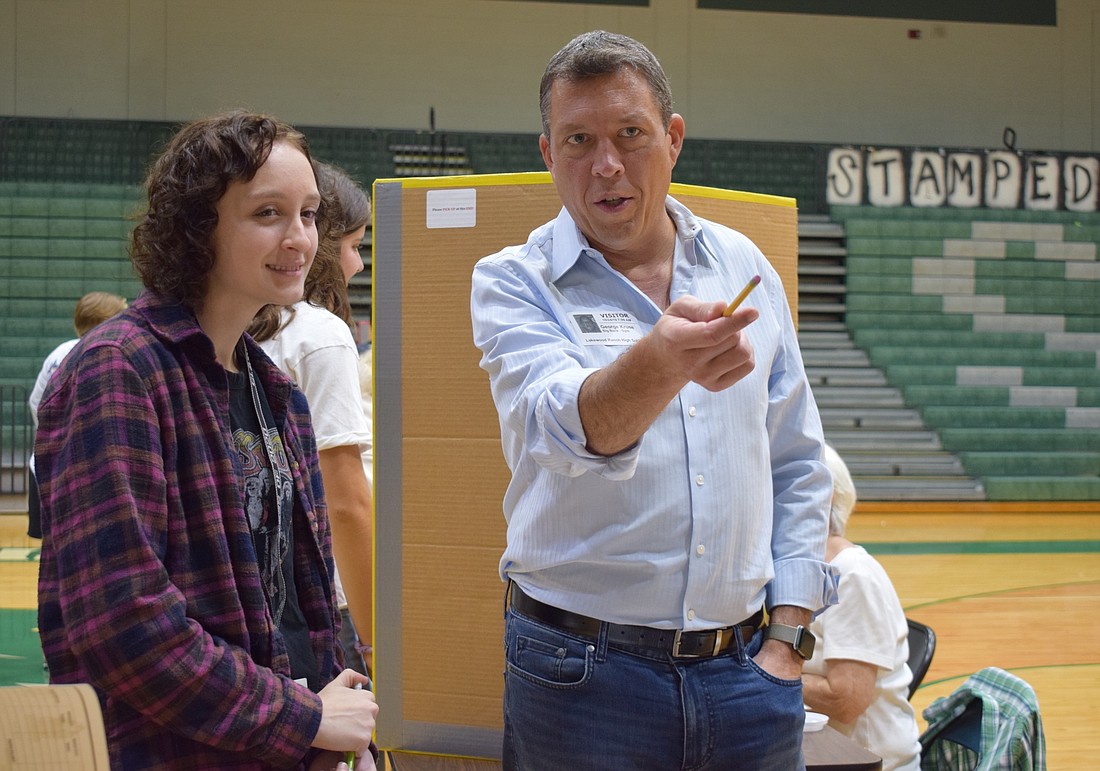- May 3, 2025
-
-
Loading

Loading

Khang Nguyen was making $750 per month as a painter and had to get a part-time job at a grocery store to support him and his wife.
After about an hour of making tough life decisions, like whether to buy a house or rent an apartment, how much to spend on childcare and what type of transportation to buy, Nguyen had no choice but to sell his home and rent an apartment to be able to support his family.
Lucky for Nguyen, a senior at Lakewood Ranch High School, a career as a painter was a pretend scenario during the Big Bank Theory Oct. 24.
“It slaps you in the face,” Nguyen said. “I know I have to make better choices.”
The Big Bank Theory is a financial literacy program the Manatee Chamber of Commerce provides to all School District of Manatee County high schools to give seniors a glimpse of what life is like when they’re 25 and on their own. Braden River High School students will participate in the program Nov. 7 and Nov. 8.
“We started this program because we heard from our chamber members that there was a lack of financial literacy with young adults,” said Terri Behling, vice president of workforce and community development for the Manatee Chamber of Commerce.
Students were given an occupation, salary and possibly a spouse and children. They had a certain amount in monthly available income to budget and purchase housing, utilities, child care, clothes, transportation, insurance, food and more. The goal was to have a positive balance at the end of the activity.
“It’s fun to see them struggle but face the realities before they actually face the reality,” said Kevin Merriman, a government teacher at Lakewood Ranch High School. “They can struggle here and be OK, but once they get on their own, the struggle is real.”
Behling said all prices in the activity were based on averages in the Manatee County area so students could have a realistic look into what it’s like in the real world.
“I just love seeing them get creative and come up with ideas on how they can save money,” Behling said.
Some students whose scenarios didn’t include a spouse decided to marry another student to double their income and others chose to have roommates to lessen the cost of housing.
Senior Emma Bittar knew after renting an apartment she would most likely need to get a part-time job on top of her primary job as a government clerk. She also had a husband who didn't and a 6-month-old child.
Bittar ended with $400 in credit card debt she wasn’t able to pay off.
“I think it teaches us a lot about the real-world expenses that people don’t really think of,” Bittar said. “It shows you the difference between wants and needs and how if you don’t manage that you can be in debt or suffer as a family or just as an individual.”
Although students’ end balance was a reflection of their choices, senior Emily Brandt, who ended with $393 out of her monthly income of $2,289, said it showed “some people might actually get luckier than others based on their situation alone” such as the job they have and the scenarios they ran into during the activity.
At the “That’s Life” table, students chose a card at random that could result in them winning the lottery, receiving a birthday gift, getting injured, adding costs to a cell phone bill and more.
Merriman said outcomes from the activity could impact choices students make in the future such as what they go to college for as well as if and when they’re going to get married or have children.
Although students were spending hundreds of pretend dollars to learn how to budget, volunteer Ann Gowgiel said the students' experience was priceless.